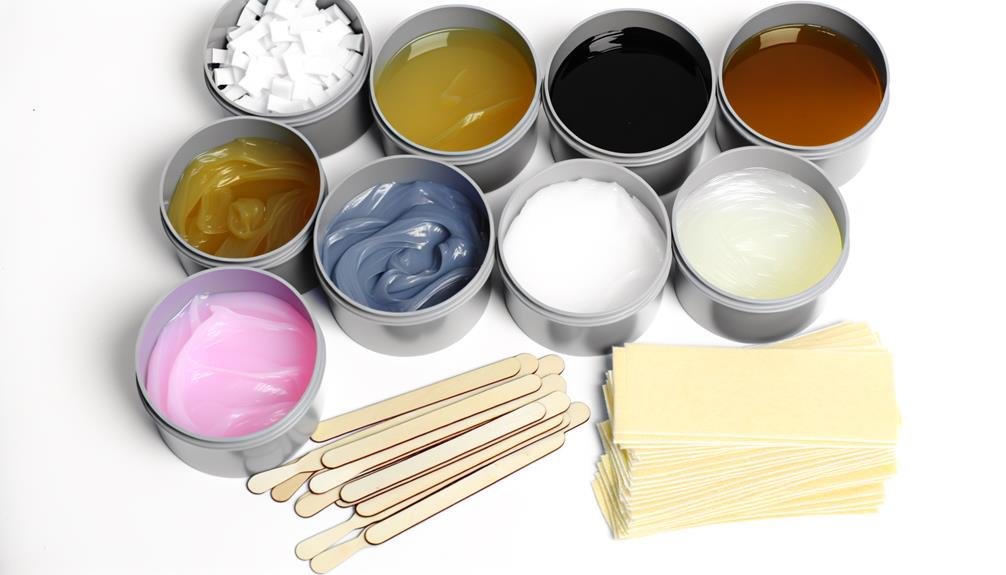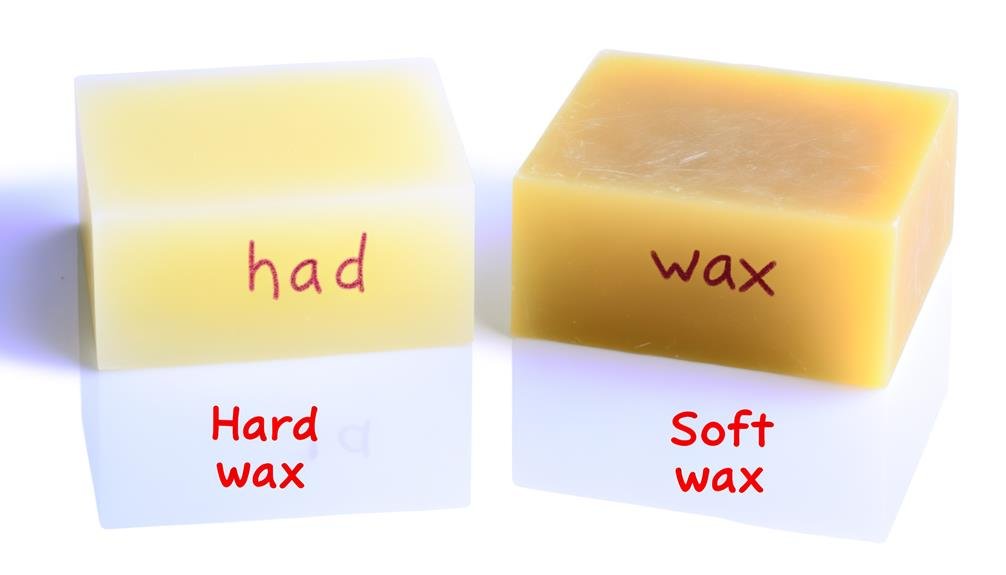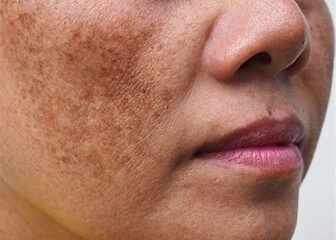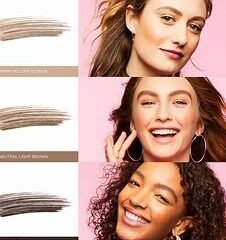Waxing
Hair Removal Techniques
Looking to find the best hair removal technique for you? 'Different strokes for different folks,' as the saying goes. With a variety of options like shaving, waxing, and laser hair removal, it's important to consider your skin type, hair color, and personal preferences.
Whether you want a temporary fix or a more permanent solution, there are techniques to suit every need. Let's explore the world of hair removal and find the perfect method for you.
Key Takeaways
- Shaving is a convenient method for removing hair from large areas but can cause skin irritation and ingrown hairs.
- Waxing provides longer-lasting smoothness and reduces the risk of ingrown hairs and razor burn, but may cause skin sensitivity and require professional help.
- Plucking and threading are precise methods for removing individual stray hairs or shaping eyebrows, but can be painful and not suitable for large areas.
- Depilatory creams offer a quick and effective alternative to traditional methods, but may have an unpleasant odor and potential for skin burns if used improperly.
Shaving
When shaving, you cut the hairs at the surface of the skin with a razor, which can be done on any part of your body.
It's one of the most common hair removal methods used by people. Shaving is a quick and easy method for removing hair from large areas of the body like the legs, arms, and face.
Many people use this method because it's convenient and can be done at home without the need for professional assistance. However, it's important to be cautious as shaving can cause skin irritation, cuts, and razor burn, especially in sensitive areas.
Additionally, the results of shaving aren't long-lasting, as hair grows back relatively quickly. Ingrown hairs can also be a common side effect, particularly in the pubic region.
Despite these drawbacks, shaving remains a popular choice for many due to its accessibility and the ease with which it can be incorporated into a regular grooming routine. For those seeking longer-lasting results, other hair removal treatments like laser therapy may be more suitable.
Waxing
As an effective hair removal method, waxing involves applying hot wax to the skin and quickly removing it, resulting in longer-lasting smoothness compared to shaving. It's a great way to remove unwanted hair from various parts of your body. Unlike shaving, waxing slows down hair growth, and it also reduces the risk of ingrown hairs and razor burn. Even facial hair growth can be managed effectively through waxing.
However, it's important to be cautious after waxing to ensure the best results. The skin after waxing may be slightly sensitive and prone to irritation, so it's essential to keep it clean and moisturized. You should also avoid exposing the waxed areas to direct sunlight or using harsh products immediately after waxing.
If you're new to waxing, consider seeking professional help to ensure the process is done correctly. With proper care, waxing can leave you with smooth, hair-free skin for several weeks, making it a popular choice for many individuals looking for longer-term hair removal solutions.
Plucking
To pluck hairs effectively, select a high-quality pair of tweezers with a fine tip. Plucking is suitable for removing individual stray hairs, reshaping eyebrows, and pulling out facial hairs. It is a precise and fast method for removing multiple hairs at once, offering results that can last 4 to 5 weeks. However, it is not suitable for large areas and can cause ingrown hairs or scarring if not done carefully.
| Pros | Cons |
|---|---|
| Offers precise hair removal | Can be painful |
| Results can last 4-5 weeks | Not suitable for large areas |
| Inexpensive method | Can cause ingrown hairs or scarring |
Plucking is an inexpensive and easy method for removing unwanted hair. However, it is important to be cautious and gentle to avoid any damage to the skin or hair follicles. For larger areas, other methods such as waxing or laser hair removal treatments may be more suitable. Remember, when using tweezers, always ensure that they are clean and sanitized to prevent any risk of infection.
Threading
Threading is a traditional Indian hair removal method that offers precision and speed, making it suitable for removing multiple hairs at once, continuing the discussion from the previous subtopic of plucking.
This method of hair removal involves the use of twisted strings to pull out unwanted hair, providing results that can last 4 to 5 weeks. Threading causes minimal irritation, making it suitable for sensitive or acne-prone skin.
When performed by experienced professionals, it can be particularly effective for smaller areas like shaping eyebrows, offering a precise and defined look.
- Imagine the satisfaction of achieving perfectly shaped eyebrows with minimal discomfort.
- Experience the confidence of smooth, hair-free skin that lasts for weeks.
- Enjoy the convenience of a quick and efficient hair removal method that's suitable for various skin tones.
Depilatory Creams
If you're looking for a quick and effective way to remove unwanted hair, consider using depilatory creams, which offer a convenient alternative to traditional methods like threading. Depilatory creams are a popular choice for at-home hair removal, as they work by dissolving the hair shaft, providing a painless solution for removing unwanted hair. They are suitable for various hair types and can be used to remove body hair, including on the legs, arms, and bikini area. However, it's important to conduct a patch test before using depilatory creams to avoid potential allergic reactions and skin burns.
| Pros | Cons | Tips |
|---|---|---|
| Quick and easy to use | Unpleasant odor | Test a small area for allergic reactions before use |
| Suitable for various areas | Potential for skin burns if used improperly | Follow the instructions carefully for best results |
| Results last longer than shaving | Not suitable for all skin types | Choose a cream designed for specific body areas |
It's essential to note that depilatory creams may not be suitable for all skin types and can cause irritation for some individuals. If you have sensitive skin or are prone to razor bumps, it's advisable to consider alternative hair removal techniques such as waxing or laser treatments.
Laser Hair Removal
Consider undergoing a series of laser hair removal treatments for a long-lasting solution to unwanted hair. Laser hair removal, recommended by the American Academy of Dermatology, offers several benefits:
- Say goodbye to ingrown hairs and razor burn, as laser hair removal targets the hair shaft and can treat and prevent these issues.
- Enjoy the expertise of top doctors and highly trained technicians, ensuring a safe and effective procedure.
- Eliminate the need for constant shaving or the use of depilatory creams, providing a long-term solution to unwanted hair.
Laser hair removal is especially effective for individuals dealing with pseudofolliculitis barbae, a condition commonly experienced by men with curly hair. This technique can also target vellus hair, the fine, barely noticeable hair commonly found on the face, and is effective on various parts of the body.
To ensure the best results, consult a dermatologist to determine if laser hair removal is suitable for your skin type and hair color.
Electrolysis
Undergoing a series of electrolysis treatments can provide a permanent solution for unwanted hair, with the FDA-approved procedure targeting the hair follicles to prevent future growth.
Electrolysis is particularly beneficial for individuals with excessive or coarse hair, as it can permanently remove it. Unlike other hair removal techniques, electrolysis doesn't cause ingrown hairs or razor burn, which can leave the skin red and irritated.
The two primary methods of electrolysis, galvanic and thermolytic, offer options for different types of hair and skin. Galvanic electrolysis chemically destroys the hair follicle, while thermolytic electrolysis uses heat to achieve the same outcome.
To ensure safe and effective treatment, it's crucial to seek the expertise of a board-certified electrologist. While at-home electrolysis kits are available, they don't involve inserting probes into the follicles and may not deliver the same permanent results as professional treatment.
Consider consulting a professional electrologist to discuss the best approach for your specific hair removal needs.
Frequently Asked Questions
What Is the Most Effective Method of Hair Removal?
For the most effective hair removal method, consider your hair type, pain tolerance, and desired permanence. Laser hair removal offers long-lasting results, electrolysis is permanent, and prescription medications can slow hair growth. Waxing and threading provide alternative options.
What Is the Latest Method of Hair Removal?
The latest method of hair removal involves intense pulsed light (IPL) therapy, which offers long-term results but requires multiple sessions. Dermatologists can recommend the most effective options tailored to your skin tone, hair location, and desired duration.
How Do You Get Rid of Hair Without Shaving or Waxing?
To get rid of hair without shaving or waxing, you have options like using depilatory creams, trying threading, or going for laser hair removal or electrolysis. Each method has its pros and cons, so choose carefully.
What Is Better Electrolysis or Laser Hair Removal?
When deciding between electrolysis and laser hair removal, consider your skin tone, hair color, pain tolerance, and budget. Consult a qualified technician or dermatologist to determine the best method for your hair removal needs.
Conclusion
So, now that you've learned about the different hair removal techniques, you can make an informed decision based on your skin type, hair color, and personal preferences. Whether you choose shaving for quick results, waxing for longer-lasting smoothness, or laser hair removal for a more permanent solution, there are plenty of options to suit your needs.
Just remember to consider the pros and cons of each method before making your choice.
Waxing
Waxing Pot and Wax for Every Skin Type Removal TIPs
Looking for waxing tips for every skin type? Check out our guide on the best waxing pot and wax to use for different skin types.

Are you aware that nearly 85% of women in the United States remove unwanted hair on a regular basis? If you’re one of them, then you know the importance of finding the right wax and waxing pot for your specific skin type. But with so many options available, how do you know which one is best for you? In this discussion, we will explore the different types of wax and waxing pots that cater to every skin type, helping you achieve the smooth and hair-free results you desire. So, whether you have dry, oily, or sensitive skin, keep reading to discover the tips and tricks that will revolutionize your waxing experience.
Key Takeaways
- Consider your skin type and the area you will be waxing when choosing between hard wax and soft wax.
- Hard wax is recommended for sensitive skin and smaller sections, while soft wax is ideal for larger areas.
- Opt for hard wax or stripless wax for sensitive skin to minimize irritation and discomfort.
- Practice pre and post-wax care essentials, such as cleansing the area before waxing, exfoliating to prevent ingrown hairs, and moisturizing the skin after hair removal.
Find the Perfect Wax for Your Skin Type
To find the perfect wax for your skin type, consider whether you would benefit more from using hard wax or soft wax. Both types of wax can effectively remove hair, but they have different properties that make them more suitable for certain areas of the body. If you have sensitive skin or want to wax more delicate areas like the bikini area or face, hard wax may be the better choice. Hard wax adheres to the hair only and not the skin, making it less painful and reducing the risk of irritation. On the other hand, if you are waxing larger areas like your legs or arms, soft wax may be more appropriate. Soft wax can cover more surface area at once, making the process quicker and more efficient. When choosing a wax, it is important to consider your skin type and consult with a board-certified dermatologist if you have any concerns. They can provide personalized recommendations based on your specific needs and help you achieve the best results.
How to Use Hard Wax for At-Home Hair Removal
Using hard wax for at-home hair removal is a simple and effective method for achieving smooth and hair-free skin. Here are some tips to help you properly use hard wax for hair removal:
- Start by cleansing the area you want to wax with a gentle cleanser to remove any dirt or oils. This will ensure that the wax adheres properly to the skin.
- Apply a thin layer of pre-wax oil to protect your skin and create a barrier between the wax and your skin. This will help prevent any irritation or discomfort during the hair removal process.
- Heat the hard wax in a wax melter or warmer until it reaches the recommended temperature. Stir the wax slightly to cool it down a bit before applying it to your skin. This will prevent burns or discomfort.
- Apply the wax in the direction of hair growth, making sure to create a lip at the end. This lip will make it easier to remove the wax later on.
- Wait for the wax to harden completely before removing it. Then, quickly and firmly pull the wax off in the opposite direction of hair growth. This will ensure effective hair removal.
Hard Wax Vs. Soft Wax: Choosing the Right Option

When deciding between hard wax and soft wax for hair removal, it is important to consider your specific hair type and the area you will be waxing. Both types of wax have their own benefits, so it’s essential to choose the right option for your needs.
Hard wax is recommended for sensitive skin because it adheres to the hair shaft and removes on its own, making it less painful and gentler on delicate areas. It is also effective for preventing ingrown hairs and leaves the skin smooth and hair-free. Hard wax is suitable for smaller sections, like the bikini area or face, and works well with a wax warmer.
On the other hand, soft wax is ideal for larger areas like legs or arms. While it may be more painful than hard wax, it is still effective in removing the hair from the root. Soft wax is also great for exfoliating the skin and moisturizing it, leaving you with smooth and silky results.
Tips for Waxing Sensitive Skin
If you have sensitive skin, it’s crucial to take extra precautions when waxing to minimize any potential irritation or discomfort. Here are some tips to help you have a successful waxing experience:
- Choose the right wax: Opt for hard wax or stripless wax, as they are gentler on sensitive skin compared to soft wax. These types of wax adhere to the hairs, not the skin, reducing the risk of irritation.
- Prep your skin: Make sure your skin is clean and dry before waxing. This helps the wax adhere better to the hairs and reduces the chances of any unwanted side effects like ingrown hairs. You can also apply a light layer of baby powder to absorb any excess moisture and make the waxing process smoother.
- Wax in the opposite direction of hair growth: When applying the wax, be sure to go against the direction of hair growth. This helps the wax grip the hairs more effectively, resulting in a cleaner and less painful waxing experience.
Pre and Post-Wax Care Essentials

Are you unsure about how to properly care for your skin before and after waxing? Taking care of your skin is crucial to ensure a smooth and successful waxing experience. Let’s start with pre-wax care. Before waxing, it is essential to cleanse the area with a pre-wax cleanser to remove any dirt or oils. This will allow the wax to adhere better to the hair and not the skin. Additionally, exfoliating the area beforehand can help remove dead skin cells and prevent ingrown hairs.
Moving on to post-wax care, it is important to soothe and moisturize your skin after hair removal. Applying a soothing lotion or aloe vera gel can calm any redness or irritation. This will also help keep your skin hydrated and prevent dryness. To avoid further irritation, it is recommended to avoid hot showers or baths for at least 24 hours after waxing.
For those with sensitive skin, using a hard wax specifically designed for sensitive skin can help minimize discomfort and reduce the risk of irritation. Taking these steps will ensure that your skin remains smooth and hair-free for longer. Remember to regularly exfoliate the waxed area to prevent ingrown hairs and maintain smooth skin. Lastly, wearing loose-fitting clothing after waxing will allow your skin to breathe and reduce friction.
Frequently Asked Questions
Is Waxing Suitable for All Skin Types?
Yes, waxing is suitable for all skin types. It’s important to choose the right wax for your skin type and follow proper pre and post-wax care. Patch testing is recommended to ensure compatibility.
What Hair Removal Wax Doesn T Stick to Skin?
Hard wax is the best option for hair removal that doesn’t stick to your skin. It adheres to the hair shaft and removes on its own, making it less likely to cause discomfort or irritation.
What Are 3 Waxing Methods?
There are three waxing methods: hard wax, soft wax, and sugaring. Hard wax is great for sensitive areas, while soft wax is ideal for larger areas. Sugaring involves using a paste made of sugar, lemon, and water for hair removal.
How Do You Get Wax off Your Skin That Won’t Come Off?
To get wax off your skin that won’t come off, try applying a little baby oil or olive oil and gently massaging the area. Then, use a warm, damp cloth to wipe away the softened wax.
Waxing
Tools for at Home Waxing
Wondering if at-home waxing is for you? You'll be glad to know that with the right tools, achieving smooth, hair-free skin is more convenient than you think. From wax strips to wax warmers, the right kit can provide a professional waxing experience in the comfort of your own home.
Whether it's for your legs, face, or bikini area, a variety of kits cater to different needs. With proper heating and aftercare, you can achieve safe and effective results while minimizing the risk of skin damage.
So, if you're ready to take control of your hair removal routine, let's explore the essential tools for successful at-home waxing.
Key Takeaways
- Spatula: Apply hard wax beads in a thin, even layer for effective hair removal.
- Wax warmer: Heat wax to the perfect temperature for a professional waxing experience at home.
- Wax strips: Convenient option for sensitive areas like the face, with different sizes for various body areas.
- Hard wax: Gentle and suitable for sensitive skin, removes hair from delicate areas.
Essential At-Home Waxing Tools
You should always use a spatula to apply the hard wax beads onto your skin in a thin, even layer for the best results. This ensures that the wax adheres to the hair follicles and removes on its own, making it suitable for sensitive skin and less painful.
When choosing an at-home hair removal kit, consider a wax warmer to heat the wax to the perfect temperature, providing a professional waxing experience in the comfort of your home. For areas like the face, where the skin is more delicate, wax strips are a convenient option. Look for a kit that includes multiple strip sizes for different body areas and is suitable for sensitive skin.
It's important to consider the type of wax included in the kit. Hard wax is gentle and effective for sensitive skin, while soft wax can be irritating. Ensure the kit contains skin-soothing ingredients to calm and nourish the skin post-waxing.
Types of Wax for Home Use
When selecting a wax for at-home use, consider the wax's ingredients and suitability for your skin type and sensitivity. There are various types of wax for home use, each with its own benefits and suitability for different areas of the body. Here are some popular options to consider:
- Soft or Hard Wax: Best Home Waxing Kits may offer both options, but soft wax is great for larger areas of the body, while hard wax is ideal for sensitive areas like the face and bikini line.
- Flamingo Women's Body Wax: This type of wax is made with organic sugar, making it a natural and eco-friendly option for removing hair from both the face and body.
- Hair Remover Wax Strip: These strips are convenient and easy to use, providing a mess-free waxing experience. Some may come with a removable silicone bowl for heating the wax, enhancing the at-home waxing process.
Choosing the right type of wax for your at-home waxing needs is essential for achieving the best results and ensuring a comfortable experience.
Choosing the Right Waxing Kit
Select a kit that caters to your specific waxing needs and preferences. Consider the areas of your body that need waxing and whether you have a preference for hard or soft wax. If you have sensitive skin, opt for a kit that includes hard wax, as it's more gentle.
Look for a home wax kit that includes both face and body applicators if you plan to wax different areas. Ensure that the kit is designed to remove unwanted hair from the specific areas you're targeting. Check the ingredients to make sure they don't contain any potential allergens, and prioritize hydration by choosing a kit with added oils.
For those with sensitive skin, it's crucial to select a body wax kit that's formulated to be gentle and soothing. Additionally, consider kits that come with aftercare products to soothe and moisturize the skin after waxing.
Post-Waxing Skin Care
After waxing, it's important to regularly apply aloe to soothe the skin and minimize irritation. This will help to calm any redness and sensitivity caused by the hair removal process. In addition to aloe, consider using nourishing oils to keep the skin hydrated and prevent dryness. Opt for oils that are good for sensitive skin to minimize the risk of any adverse reactions.
Use a purifying lotion to cleanse the skin after waxing. This will help to remove any leftover wax residue and soothe the skin.
Consider wearing loose clothing to prevent friction and irritation on the freshly waxed skin.
Maintain proper hygiene to avoid infections. Keep the waxed area clean and dry to reduce the risk of any post-waxing complications.
Tips for Successful At-Home Waxing
To achieve successful at-home waxing, ensure you have high-quality wax strips and a reliable wax heater. Choose a wax kit that's easy to use and suitable for your skin type. For sensitive skin, opt for a gentle formula designed to minimize irritation. Consider a hard wax for smaller, delicate areas like the face, as it provides good precision and is less harsh on the skin.
Before applying the wax, test the temperature on a small area of skin to avoid burns. It's crucial to follow the instructions regarding the wax's temperature to ensure safe and effective hair removal.
Additionally, to reduce discomfort during waxing and minimize ingrown hairs, exfoliate the skin a day or two before waxing. After waxing, soothe the skin with a post-wax oil or lotion specifically formulated to calm and moisturize the skin.
Frequently Asked Questions
What Do You Need to Wax at Home?
You need waxing strips, warming kits, and soothing lotions for at-home waxing. Choose soft or hard wax based on your hair type and sensitivity. Use large strips for legs and smaller ones for the face.
What Equipment Is Needed for Waxing?
To wax at home, you need wax strips or a waxing kit, a wax warmer, pre-wax cleanser, and post-wax soothing oil. Make sure to also have applicator sticks, a mirror, and baby powder for a smooth process.
What Is a Good at Home Waxing Kit?
For a good at-home waxing kit, consider Nads Natural Sugar Wax kit or Bliss at-home waxing kit. They are effective and easy to use, providing long-lasting results. Both are popular choices for achieving smooth, hair-free skin.
Is It OK to Wax Yourself at Home?
Yes, it's okay to wax yourself at home if you follow proper techniques and precautions. Choose a gentle wax kit suitable for your skin type, exfoliate beforehand, and follow up with post-wax care for best results.
Conclusion
Now that you have all the essential tools and knowledge for at-home waxing, you can achieve smooth and hair-free skin without the hassle of salon appointments.
Remember to follow proper heating and aftercare instructions for safe and effective results.
With the right waxing kit and post-waxing care, you can enjoy the convenience and cost-effectiveness of at-home waxing while achieving professional-quality results.
Waxing
Types of Waxes
Looking to learn about types of waxes? You’ve come to the right place!
There are various types of waxes used for hair removal, each with its own unique benefits.
From warm soft wax for fine hairs to fruit wax for sensitive skin, there’s a wax suited for everyone.
Understanding the differences can help you provide the best service for your clients.
Key Takeaways
- There are different types of hair removal waxes, including warm soft wax, warm hard wax, pre-made wax strips, and fruit wax, which cater to specific preferences and skin types.
- Bikini wax styles include classic bikini wax, mini Brazilian wax, full Brazilian wax, and
Hair Removal Waxes
If you’re looking for effective hair removal waxes, consider the various types available to find the one best suited for your needs. There are different types of waxes for hair removal, each catering to specific preferences and skin types.
Warm soft wax, also known as strip wax, is a popular choice. It’s gently warmed and applied in a thin layer over the skin, efficiently removing hair when a cloth strip is pressed on and removed.
On the other hand, warm hard wax is suitable for areas with thicker hair. It’s applied warm and hardens as it cools, making it perfect for smaller, more sensitive areas like the lip, nose, underarms, and bikini area.
If you prefer a less messy option, consider pre-made wax strips. These are ready-to-use strips with the right amount of wax attached, making them user-friendly and ideal for smaller areas.
If you have sensitive skin, fruit wax might be the best option for you. It contains fruit enzymes that gently buff away texture and is rich in antioxidants, anti-inflammatory, and brightening properties, making it safe for sensitive skin.
Whether you choose warm soft wax, warm hard wax, pre-made wax strips, or fruit wax, you’ll find an option that suits your hair removal needs.
Bikini Waxes
When choosing a bikini wax, you may want to consider the specific style that best suits your preferences and needs for hair removal. Different waxes offer various levels of hair removal and styling, catering to individual desires. Here are some options to consider:
- Classic Bikini Wax: This style targets visible areas from a bathing suit, removing hair up to a four-finger width from the bikini line, providing a clean and tidy appearance.
- Mini Brazilian Wax: Ideal for those who prefer a minimal look, this style involves completely removing the hair from the front, leaving the front area totally bare.
- Full Brazilian Wax: The most commonly requested option, covering everything in the front, including the bikini line and labia, and extending all the way to the butt strip, ensuring a completely hair-free result.
- French Wax: Sometimes referred to as a French bikini, this style leaves some hair on top and on the labia, going slightly inside where the swimsuit would cover, offering a more natural look while still providing hair removal.
Considering the various options available, it’s essential to choose the style that best suits your desired hair growth and removal preferences
Pre-made wax strips: These are convenient options for quick applications, especially for smaller areas and when traveling, ensuring that your equipment is always ready for action.
Understanding the different types of ski and snowboard waxes available will help you make informed decisions about the best products to use for your specific needs.
Frequently Asked Questions
What Are the 2 Main Types of Wax?
The 2 main types of wax are warm soft wax and warm hard wax. Warm soft wax is great for even the finest hairs, while warm hard wax is effective for thicker and finer hair.
Which Wax Is Best for Body Female?
For female body waxing, warm soft wax is best. It efficiently picks up fine hairs and should be applied once per area to avoid irritation. It’s a great choice for smooth, long-lasting results.
Is Brazilian Wax a Type of Wax?
Yes, Brazilian wax is a type of wax primarily used for hair removal in the bikini area. It includes variations like mini, full, Sphinx, Hollywood, and Brazilian South, catering to different preferences for hair removal.
What Waxes for Brazilian Wax?
For Brazilian waxing, consider warm soft wax or warm hard wax. These are efficient at picking up even the finest hairs. Avoid using cold soft wax multiple times on the same area, as it can cause irritation.
Conclusion
So, whether you’re looking for a gentle and efficient hair removal method, a smooth bikini wax, or a brazilian wax these tips will help you choose the right wax for you.
With options like warm soft wax, warm hard wax, cold soft wax, fruit wax, and sugar wax, you can find the perfect match for your skin type and preferences.
Happy waxing!
-

 Skin Care2 years ago
Skin Care2 years agoSkin Care Products That Diminish Hyperpigmentation
-

 Skin Care2 years ago
Skin Care2 years agoUltimate Guide to Identifying Your Skin Type
-

 Brow Care2 years ago
Brow Care2 years agoWhy Brow Gels Can Cause Brows to Fall Out
-

 Brows2 years ago
Brows2 years agoHow to have Thicker Eyebrows
-

 Homemade Beauty2 years ago
Homemade Beauty2 years agoRecipes for Homemade Facials
-

 Skin Care2 years ago
Skin Care2 years agoMorning and Night Skincare Routines for Various Skin Concerns.
-

 Lip Care2 years ago
Lip Care2 years agoVegan Lip Care: The Best Cruelty-Free Products
-

 Hair-Styling2 years ago
Hair-Styling2 years agoEasy Hairstyles for Busy Mornings.




